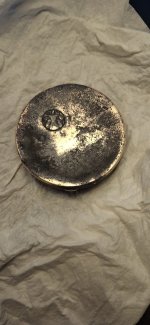Hello, I've been a member here for years and really enjoyed it, but I don't think I've ever posted before. I'm hoping your knowledge of all things old will help finally give a positive ID to this item.
This has been in my family since at least the 1950's, collected by my grandmother who made a lot of trips out to New Mexico and Arizona.
I always assumed it was petrified wood from the Petrified Forrest National Park area but it doesn't actually look like any pictures of petrified wood I've seen, and it is too light.
Dimensions are about 15 inches long and 3 inches thick at the thickest end, with a slight taper along the length.
Weight is 7.50 pounds on a digital fish scale.
it has the right curve to be a tusk of some kind but the surface texture and details aren't quite like fossil tusks I've seen.
The specks of white are paint that somehow got onto the surface during years of knocking around in storage, other than dust there doesn't appear to be any other foreign substances, but I haven't tried to clean it at all.
If there is more info that would help the ID please let me know.
Can you look at the pictures and share your ideas?
Damon
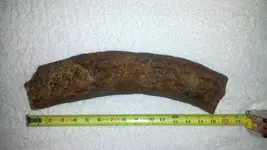
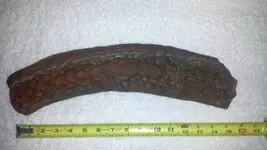
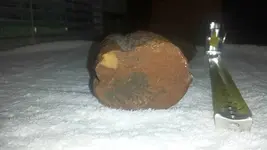
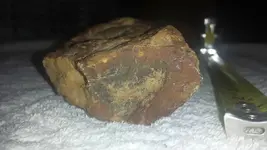
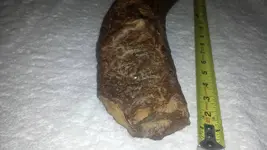
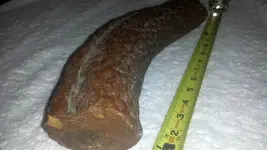
This has been in my family since at least the 1950's, collected by my grandmother who made a lot of trips out to New Mexico and Arizona.
I always assumed it was petrified wood from the Petrified Forrest National Park area but it doesn't actually look like any pictures of petrified wood I've seen, and it is too light.
Dimensions are about 15 inches long and 3 inches thick at the thickest end, with a slight taper along the length.
Weight is 7.50 pounds on a digital fish scale.
it has the right curve to be a tusk of some kind but the surface texture and details aren't quite like fossil tusks I've seen.
The specks of white are paint that somehow got onto the surface during years of knocking around in storage, other than dust there doesn't appear to be any other foreign substances, but I haven't tried to clean it at all.
If there is more info that would help the ID please let me know.
Can you look at the pictures and share your ideas?
Damon











